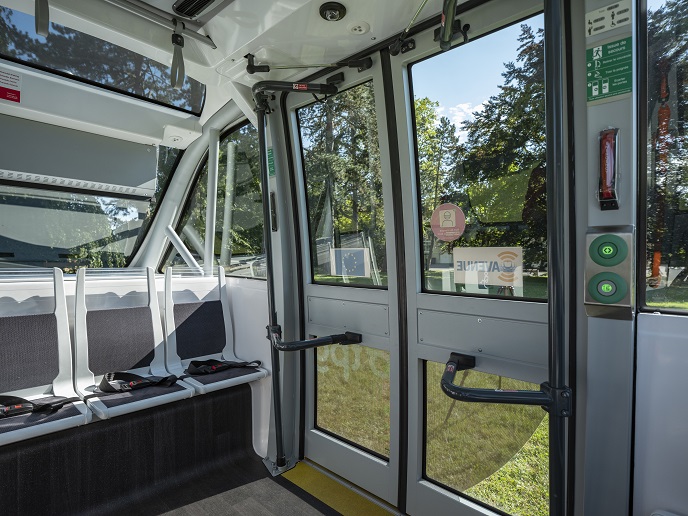Autonomous minibuses offering on-demand, door-to-door, around-the-clock service
This has been the vision of the EU-funded AVENUE project: integrating autonomous minibuses with all public and private means of transport. The key concept behind AVENUE relies on mobility as a service, a model that puts users at the core of transport services, offering them tailor-made mobility solutions based on their needs. In much the same way that movie and music streaming services provide convenient access to movies and music, mobility as a service provides citizens convenient access to a wide range of transport options through intelligent application. “This disruptive model revisits conventional public transport services, negating the need for predetermined bus itineraries,” notes Dimitri Konstantas, professor at the University of Geneva in Switzerland and project coordinator. Unlike private autonomous vehicles such as robo-taxes supporting or complementing public transport, autonomous minibuses tick all sustainability boxes, the most important one being the reduction of traffic.
Breaking down the barriers to truly autonomous vehicles
The use of autonomous vehicles in public transport will inevitably affect all aspects of urban and suburban living – from individual lifestyles to urban development and social planning. AVENUE addressed the barriers putting the brakes on shared autonomous vehicles. “The key questions that need to be answered include the following: What economic and technical models need to be applied, what are the legal and regulatory obstacles to the autonomous vehicle use, and what are the policies that public transit operators need to develop,” explains Konstantas. Passenger experience in shared autonomous vehicles is also crucial to embracing the new services. “Truly autonomous minibuses suppress the provision of formal and informal in-vehicle passenger services hitherto supported by the driver and cast doubt on whether their quality could be preserved,” remarks Konstantas. Project partners proposed and validated several in- and out-of-vehicle services aiming to revolutionise the journey experience. These included intelligent ticket control, real-time visualisation of the destination, automated in-vehicle passenger safety surveillance (like identification of aggression, vandalism, forgotten objects, passenger accidents) and tracking of child and grandparent journeys.
Driverless buses getting the green light in European cities
Since its launch in 2018, AVENUE has designed and carried out full-scale demonstrations of urban transport automation, deploying fleets of autonomous minibuses in four European cities – Copenhagen, Geneva, Luxembourg and Lyon – and two replicator sites. Through these, project partners validated the advantages of autonomous vehicle use in public transport that included the aforementioned innovative in-vehicle passenger services and guaranteed road and passenger safety. The self-driving shuttles in Geneva and Luxembourg are still integrated into the existing public transport systems, providing a greatly appreciated service for its citizens. Based on the data collected from the deployment sites, the project team provided new insights regarding the environmental impact of autonomous minibuses. “We proved that autonomous vehicles are a sustainable, viable and environmental solution for urban and suburban public transport,” notes Konstantas. Furthermore, project partners assessed the economic impact and used potential key scenario parameters to test the potential cost of this technology at a local level. The newly developed economic tool enables policymakers and public transit operators to calculate fleet size needs, the expected total cost of ownership, the cost per passenger, expected revenue and other parameters in a range of settings. Following the success of these AVENUE trials, the ULTIMO project intends to widen and commercialise autonomous minibus operations.
Keywords
AVENUE, automated vehicle, autonomous minibuses, public transport, mobility as a service, in-vehicle passenger services, door-to-door







